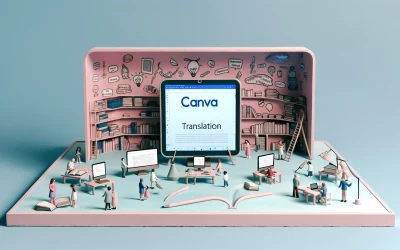ChatGPT is an AI language model that can generate human-like text responses to prompts. It has a wide range of applications, from creative writing to customer service. One of the most promising areas where ChatGPT can be utilized is in business. ChatGPT can help businesses with tasks such as generating marketing copy, drafting emails, and creating product descriptions.
To help businesses take advantage of ChatGPT’s capabilities, there are a variety of prompts available that can be used to generate text. These prompts are designed to help businesses with specific tasks, such as writing a professional email or creating a product description. By using these prompts, businesses can save time and resources while still producing high-quality text.
In this article, we will explore some of the best ChatGPT prompts for business. We will look at prompts for tasks such as creating marketing copy, drafting emails, and generating product descriptions. By the end of this article, readers will have a better understanding of how ChatGPT can be used to improve their business operations.
Understanding ChatGPT
ChatGPT is an AI language model developed by OpenAI that uses natural language processing to generate human-like responses to prompts. It has become a popular tool for businesses to generate content ideas, answer customer inquiries, and automate customer service.
Benefits of ChatGPT for Business
ChatGPT offers several benefits for businesses, including:
-
Efficiency: ChatGPT can generate responses quickly, saving businesses time and resources.
-
Consistency: ChatGPT provides consistent responses to prompts, ensuring that customers receive accurate and reliable information.
-
Scalability: ChatGPT can handle a large volume of requests simultaneously, allowing businesses to scale their customer service operations without adding additional staff.
-
Flexibility: ChatGPT can be trained on specific topics and industries, allowing businesses to customize their responses to better meet the needs of their customers.
Limitations and Considerations
While ChatGPT offers many benefits for businesses, there are also some limitations and considerations to keep in mind:
-
Accuracy: ChatGPT is not always accurate and may generate responses that are incomplete or incorrect. Businesses should review the responses generated by ChatGPT to ensure their accuracy before using them.
-
Bias: ChatGPT can be biased based on the data it is trained on. Businesses should be aware of potential biases and take steps to ensure that their responses are unbiased.
-
Privacy: ChatGPT may collect data on customer interactions, raising privacy concerns. Businesses should be transparent about their data collection practices and ensure that they comply with privacy regulations.
Implementing ChatGPT in Your Business
ChatGPT can be a valuable tool for businesses looking to improve their customer service, marketing, and overall efficiency. Here are some strategies and best practices for deploying ChatGPT in your business.
Integration Strategies
Before integrating ChatGPT into your business, it’s important to consider the following:
-
Determine your business needs: Identify the areas where ChatGPT can add value to your business, such as customer service, sales, or marketing.
-
Choose the right platform: There are multiple ChatGPT platforms available, so choose the one that aligns with your business goals and budget.
-
Train your team: Ensure that your team is trained to use ChatGPT effectively and efficiently.
Best Practices for Deployment
Here are some best practices for deploying ChatGPT in your business:
-
Start small: Begin with a limited scope, such as answering frequently asked questions or providing basic customer service.
-
Monitor and refine: Continuously monitor ChatGPT’s performance and refine its responses to ensure accuracy and relevance.
-
Personalize responses: Use customer data to personalize ChatGPT’s responses and improve the customer experience.
-
Provide human backup: Have a human backup available to take over when ChatGPT is unable to answer a question or when a customer requests a human interaction.
ChatGPT Use Cases
Businesses can utilize ChatGPT to automate various tasks and enhance their customer service, sales and marketing, as well as internal communication and collaboration.
Customer Service Enhancement
ChatGPT can be trained to answer frequently asked questions and provide customers with quick and accurate responses. By automating customer service, businesses can reduce their response time and improve customer satisfaction. ChatGPT can also assist with ticket routing and escalation, ensuring that customers are directed to the right department or agent.
Sales and Marketing Automation
ChatGPT can generate personalized product recommendations and marketing messages based on customer data. It can also assist with lead generation and qualification, allowing businesses to focus on high-priority prospects. ChatGPT can also be trained to create social media posts and email campaigns, streamlining the marketing process.
Internal Communication and Collaboration
ChatGPT can be used to automate internal communication, such as sending reminders and scheduling meetings. It can also assist with knowledge management by organizing and categorizing company documents and information. ChatGPT can also be integrated with project management tools to streamline collaboration and improve team productivity.
Creating Engaging Content
Content Generation Tips
When creating engaging content with ChatGPT, it is important to keep a few tips in mind. First, focus on your target audience and what they want to see. Consider their interests, pain points, and questions they may have. This will help you create content that resonates with them and keeps them engaged.
Second, use ChatGPT to generate ideas and inspiration for your content. For example, you can prompt ChatGPT to create a list of blog post topics related to your industry or product. This can help you come up with fresh and relevant content ideas that your audience will find valuable.
Third, aim to create content that is informative, entertaining, or both. This will help keep your audience engaged and interested in what you have to say. Use ChatGPT to help you craft headlines and introductions that grab your audience’s attention and make them want to keep reading.
Personalization Techniques
Personalization is key to creating engaging content with ChatGPT. One way to personalize your content is to use ChatGPT to create content tailored to specific audience segments. For example, you can prompt ChatGPT to create social media posts targeted at different age groups or geographic locations.
Another way to personalize your content is to use ChatGPT to create content that speaks directly to your audience’s needs and interests. For example, you can prompt ChatGPT to create blog posts or articles that address specific pain points or questions that your audience may have.
Finally, consider using ChatGPT to create interactive content that encourages engagement and participation. For example, you can prompt ChatGPT to create quizzes, polls, or surveys that allow your audience to provide feedback or share their opinions. This can help you create a more personalized experience for your audience and keep them engaged with your brand.
Analyzing ChatGPT Interactions
ChatGPT interactions can provide valuable insights into customer behavior, preferences, and needs. Analyzing these interactions can help businesses make data-driven decisions and improve their customer experience.
Metrics to Track
There are several metrics that businesses can track to measure the effectiveness of their ChatGPT interactions. These include:
-
Response time: The time it takes for ChatGPT to respond to a customer’s message. Businesses should aim for a response time of under a minute to ensure a positive customer experience.
-
Accuracy: The percentage of ChatGPT responses that are accurate and relevant to the customer’s query. Businesses should aim for a high accuracy rate to avoid frustrating customers with irrelevant responses.
-
Engagement: The number of interactions that customers have with ChatGPT. Businesses should aim to increase engagement by providing relevant and helpful responses.
Tools for Analysis
There are several tools available for businesses to analyze their ChatGPT interactions. These include:
-
ChatGPT Analytics: OpenAI provides analytics tools that allow businesses to track metrics such as response time, accuracy, and engagement.
-
Google Analytics: Businesses can use Google Analytics to track user behavior on their website, including interactions with ChatGPT.
-
Customer Feedback: Collecting feedback from customers can help businesses identify areas for improvement in their ChatGPT interactions.
Training ChatGPT for Your Business Needs
ChatGPT is an excellent tool for businesses looking to streamline their operations and improve their customer service. However, to get the most out of ChatGPT, it is essential to train it to understand your business needs.
The first step to training ChatGPT is to gather and prepare your data. This means collecting data that is representative of the tasks you want the GPT to perform. This might include customer interaction transcripts, sales data, and company mission statements. The effectiveness of a GPT largely depends on the quality and relevance of the data used for training.
Once you have collected your data, you can begin training ChatGPT. One effective way to train ChatGPT is to use prompts that are specific to your business needs. For example, if your business receives a lot of customer inquiries, you can train ChatGPT to respond to these inquiries by creating prompts that simulate customer questions. By doing this, you can ensure that ChatGPT provides accurate and helpful responses to your customers.
Another way to train ChatGPT is to use prompts that are specific to your industry. For example, if you run a restaurant, you can train ChatGPT to respond to common customer questions about your menu, hours of operation, and reservation policies. By doing this, you can improve your customer service and reduce the workload on your staff.
Future Trends in ChatGPT Technology
ChatGPT technology has come a long way since its inception, and it continues to evolve rapidly. One of the most significant trends in ChatGPT technology is the integration of more advanced machine learning algorithms. These algorithms will enable ChatGPT models to become more sophisticated, accurate, and capable of handling complex business tasks.
Another trend in ChatGPT technology is the development of more specialized models that can handle specific business needs. For example, businesses can use ChatGPT models that are specifically designed for customer service, marketing, or sales. These specialized models will enable businesses to get more accurate results and insights, which will help them make better-informed decisions.
Finally, ChatGPT technology is moving towards a more conversational approach. This means that ChatGPT models will be able to hold more natural and fluid conversations with users. This conversational approach will make ChatGPT models more user-friendly and accessible to a broader range of people.




